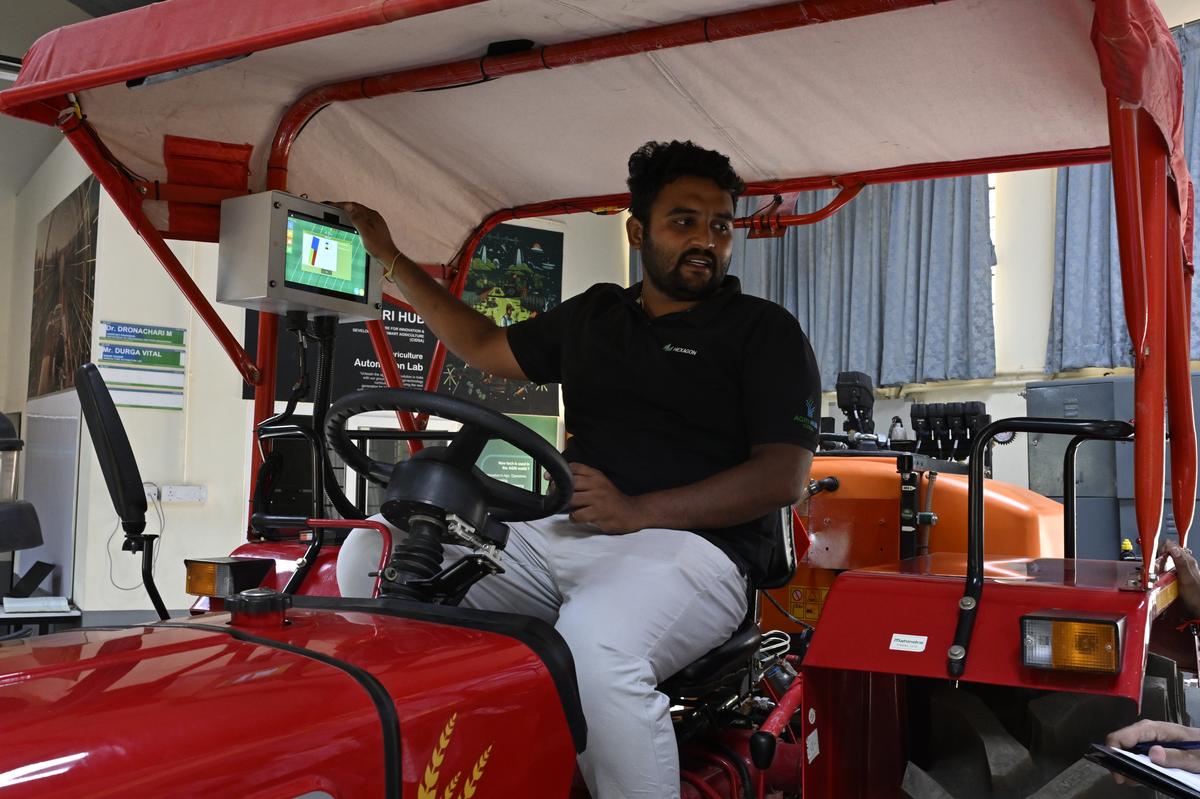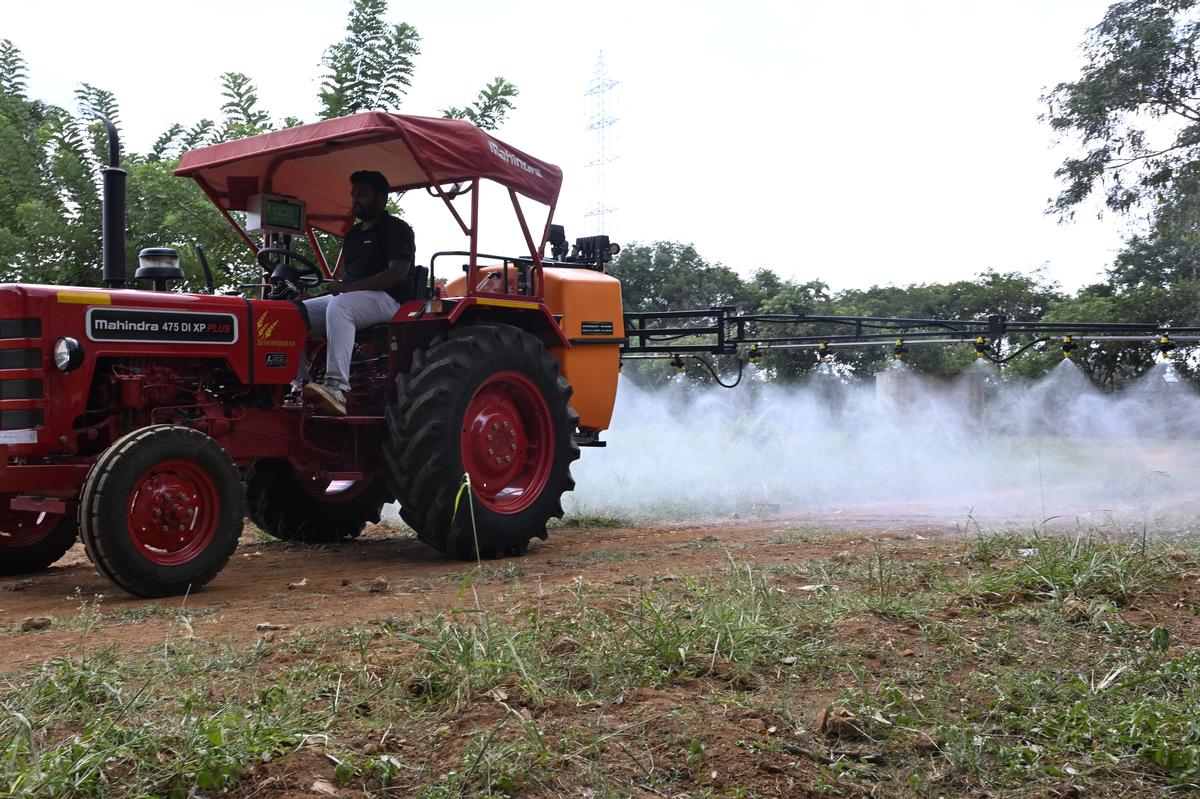
The “boom sprayer”, which is connected to the semi-automated tractor developed by the Centre for Innovation and Development in Smart Agriculture at the University of Agricultural Sciences-Bengaluru, sprays pesticide.
| Photo Credit: SUDHAKARA JAIN
The University of Agricultural Sciences-Bengaluru (UAS-B) has notched up its efforts at integration of AI into farm machinery by developing a semi-automated tractor, which has reduced the role of driver to a minimum, at its Centre for Innovation and Development in Smart Agriculture (CIDSA).
Said to be the first such working model in the country, the semi-automated tractor will have an automated steering that follows a pre-set pathway which will be fed into its electronic control system. A driver is needed to take the U-turn and operate the clutch, break and gear. But the drudgery for the driver is minimised.
In a regular operation, the driver has to not only monitor the movement of the tractor, but also focus on tilling or spraying of pesticides. With semi automation, even a person without much skill in handling tractor-mounted farm devices can operate it, says Professor H.G. Ashoka, special officer of the University’s College of Engineering.
Next phase
UAS-B Vice Chancellor Dr. S.V. Suresha says that the University is already working towards developing fully automated driver-less tractors in the next phase.
Presently, the automation is not just confined to steering control — AI technology is also being used to spray pesticides and apply fertilisers among others in addition to helping the driver understand whether there is any variation in depth level in tilling. The tractor-mounted fittings like boom sprayer that sprays pesticides and automated fertiliser broadcaster that takes care of application of fertilisers will work automatically as per the requirement calculated on the basis of the nature of the soil and crop that would be fed into the control system.

Due to semi automation, even a person without much skill in handling tractor-mounted farm devices can operate the innovative tractor model by UAS-B.
| Photo Credit:
SUDHAKARA JAIN
“The pesticide spraying and fertiliser broadcasting applications work with so much precision that there is no overlapping or over-spraying than the required quantum. Also, the nozzles of the sprayer close themselves when the vehicle is moving on empty land so that the pesticide is not wasted,” observes Anand Huggi, Manager of the Centre.
Similarly, though tilling is not automated, this operation is made easy due to a depth level monitoring system that sends an indication when the tilling depth does not meet the required level. “During mechanical tilling, the patches with soft soil get deep tilling though it is not required and result in excessive consumption of fuel. Similarly, the patches with hard soil do not get the required depth of tilling that may affect crop production. But in this case, the driver will get an alert if there are any variation in depth with respect to tilling,” says Mr. Huggi.

Though tilling is not automated, the operation is made easy due to a depth level monitoring system that sends an indication when the tilling depth does not meet the required level.
| Photo Credit:
SUDHAKARA JAIN
Community use
The semi-automated tractor model is being projected for community use, including those by custom-hiring centres.
The Centre, has been set up as a joint collaboration of the UAS-B, Karnataka Government and Hexagon Agriculture, at a cost of ₹110 crore at the University’s GKVK campus, with five different labs including the Agriculture Drone Lab, Farm Equipment Design and Manufacturing Lab.
Published – September 22, 2024 02:57 pm IST





